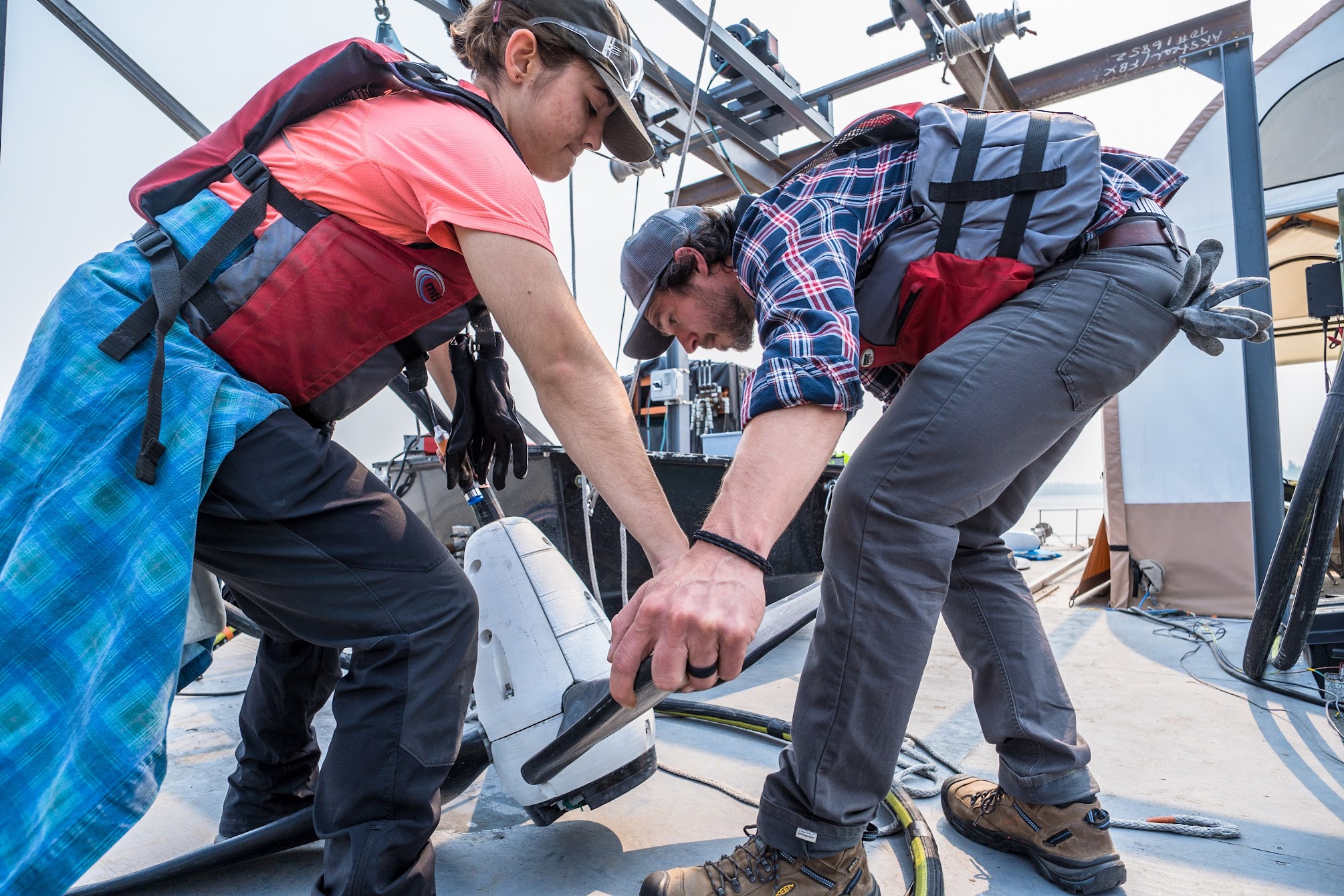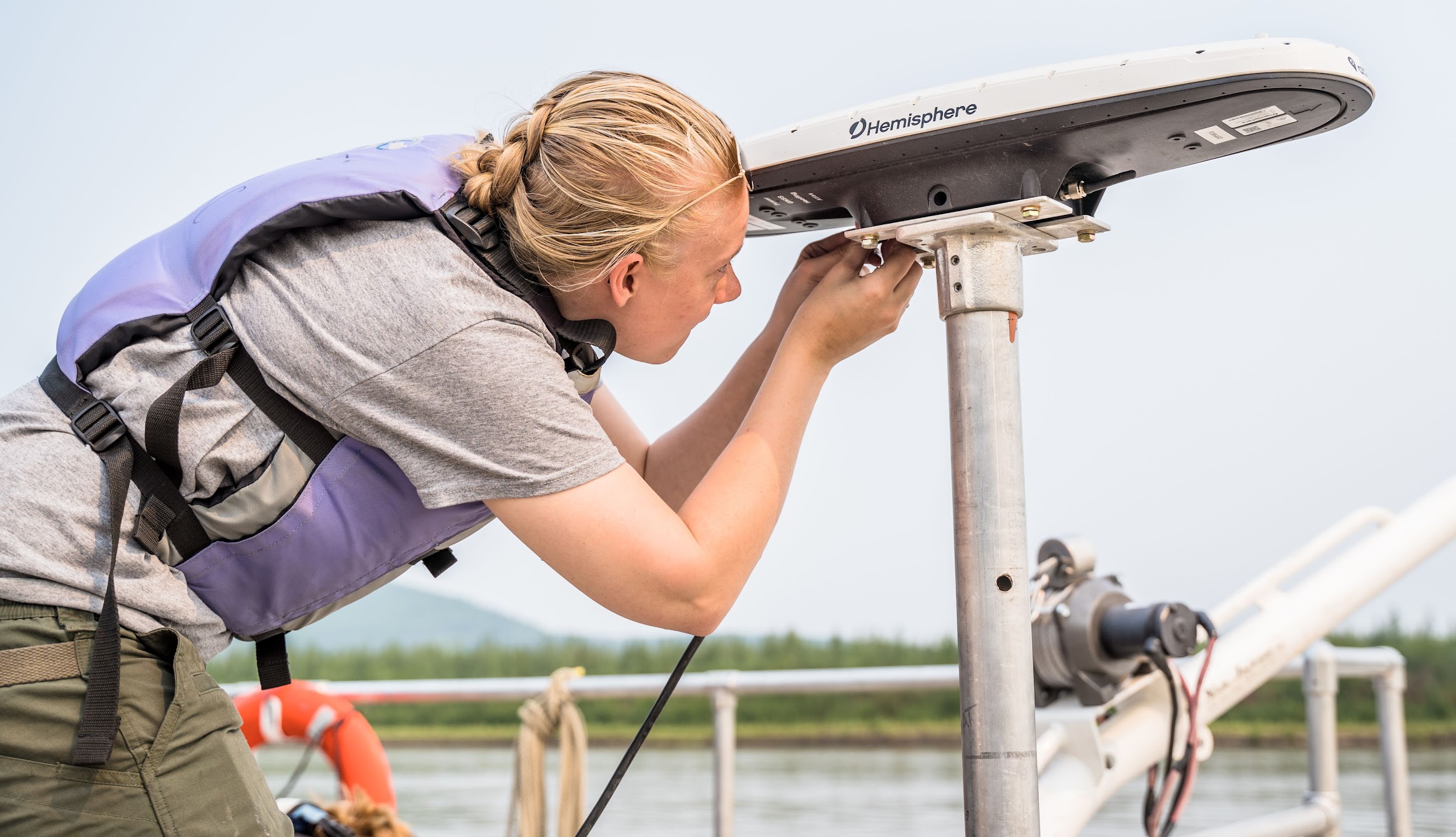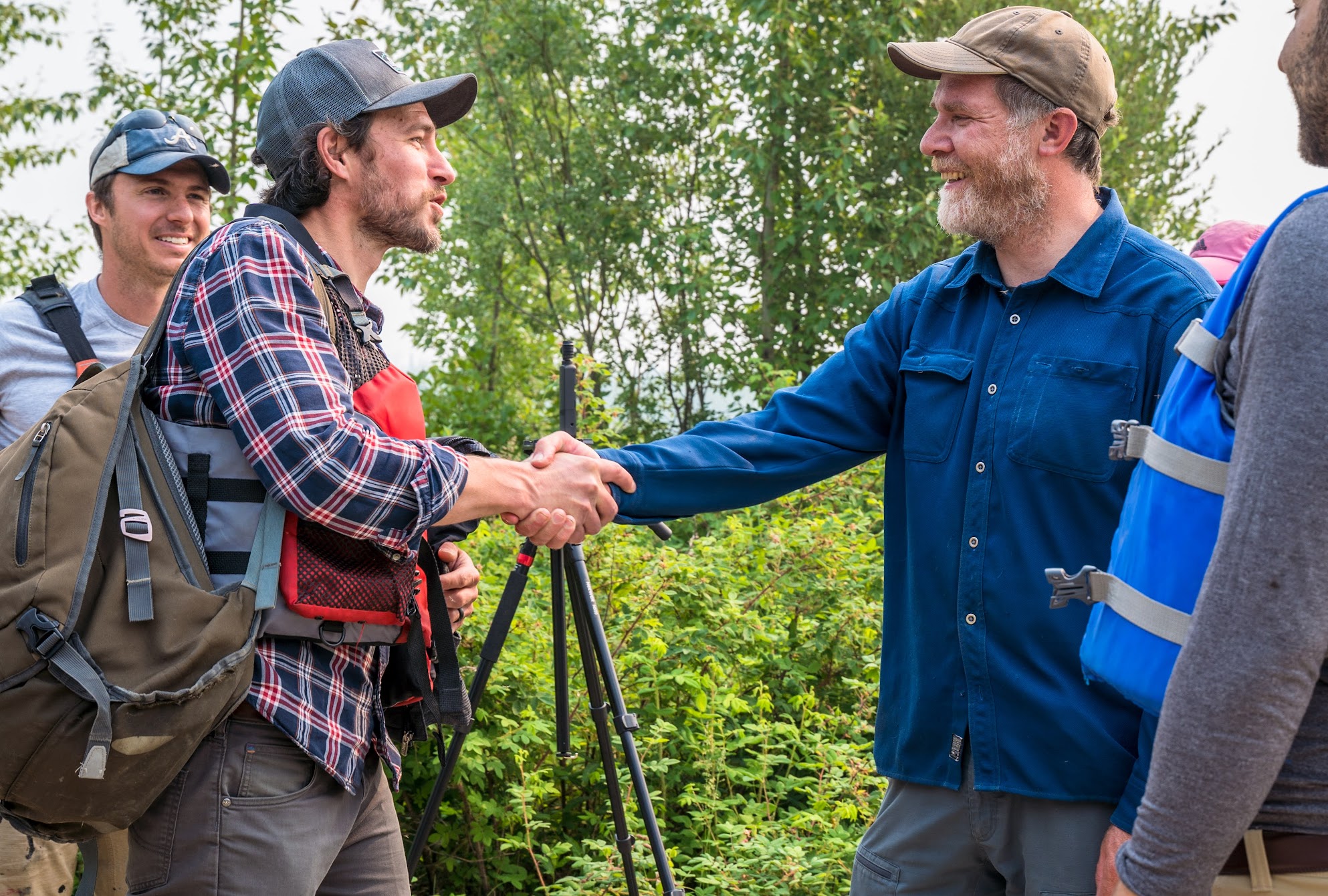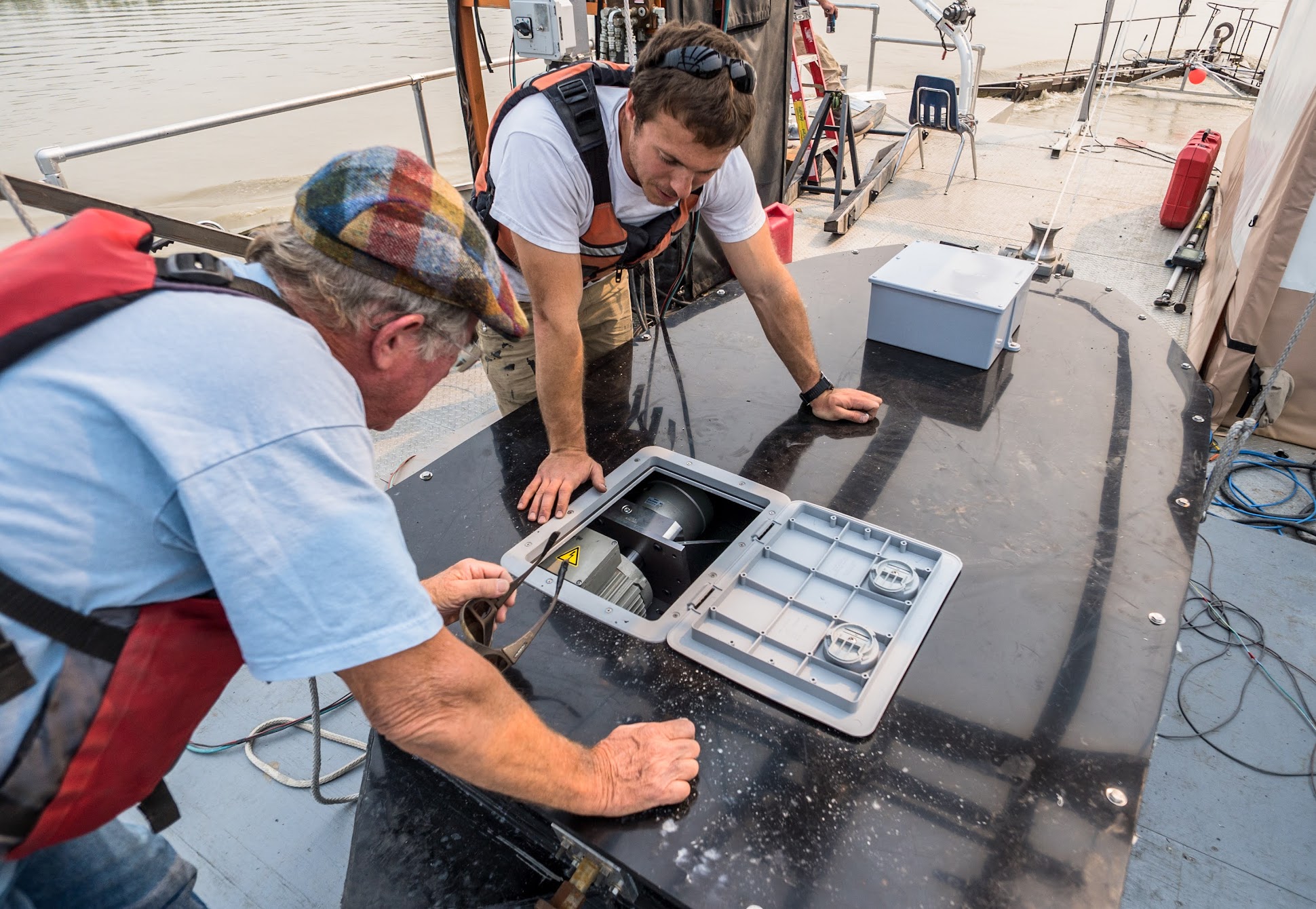Overview

Submarine Hydrokinetic and Riverine Kilo-megawatt Systems (SHARKS) intends to develop new technical pathways to design economically competitive hydrokinetic turbines for tidal and river currents.
In partnership with technology start-up BladeRunner Energy, we plan to develop a debris-resilient and material efficient hydrokinetic turbine. It will also be deployable from shore without on-river infrastructure.
This project will iterate and test the design over four operations at the Tanana River Test Site.
This project is scheduled to conclude in July 2024.
Project Details

SHARKS aims to develop and field test a novel hydrokinetic turbine (HKT) system to significantly reduce levelized cost of energy (LCOE) for remote riverine applications. We will employ co-design methodologies, collaborating with stakeholders of the target communities during the design process.
We intend to use a flexible torsional cable to transmit torque from a submerged turbine to a floating generator housing. Use of the cable will be advantageous in many ways: it is debris-resilient through turbine deflection, enables customizable paring of rotor and generator to match specific river velocities, and eliminates the need for submerged bearings and seals.

The arrangement is remarkably structurally efficient, as all drag loads are carried via the torsional cable to the generator housing, and then through a single mooring line to ground. This unique structure enables low cost deployment via a single anchor or via an innovative shore-based deployment method that drastically reduces infrastructure requirements and installation and maintenance costs.
The turbine will incorporate a novel, high-efficiency electrostatic generator, which is expected to enable 95% conversion efficiency of shaft power to electrical power at direct-drive speeds under 200 rpm.
This project is led by University of Alaska Fairbanks researchers at the forefront of hydrokinetic and microgrid development in close collaborations with innovative small businesses BladeRunner Energy, Inc. and C-Motive Technologies, Inc. We as partners will implement co-design to work with remote communities through three iterations of design-build-test to maximize the performance of the HKT system. We will also implement strategies to improve debris resilience, decrease structural requirements, and increase system availability.
Remote community engagement throughout the project will bring valuable insights and guidance from remote energy leaders. Our effort represents a significant opportunity to advance the commercial viability of riverine HKT systems and deliver affordable, local, renewable energy to remote communities.

The information, data or work presented herein was funded in part by the Advanced Research Projects Agency-Energy (ARPA-E), U.S. Department of Energy, under Award Number DE-AR0001444. The views and opinions of authors expressed herein do not necessarily state or reflect those of the United States Government or any agency thereof.



